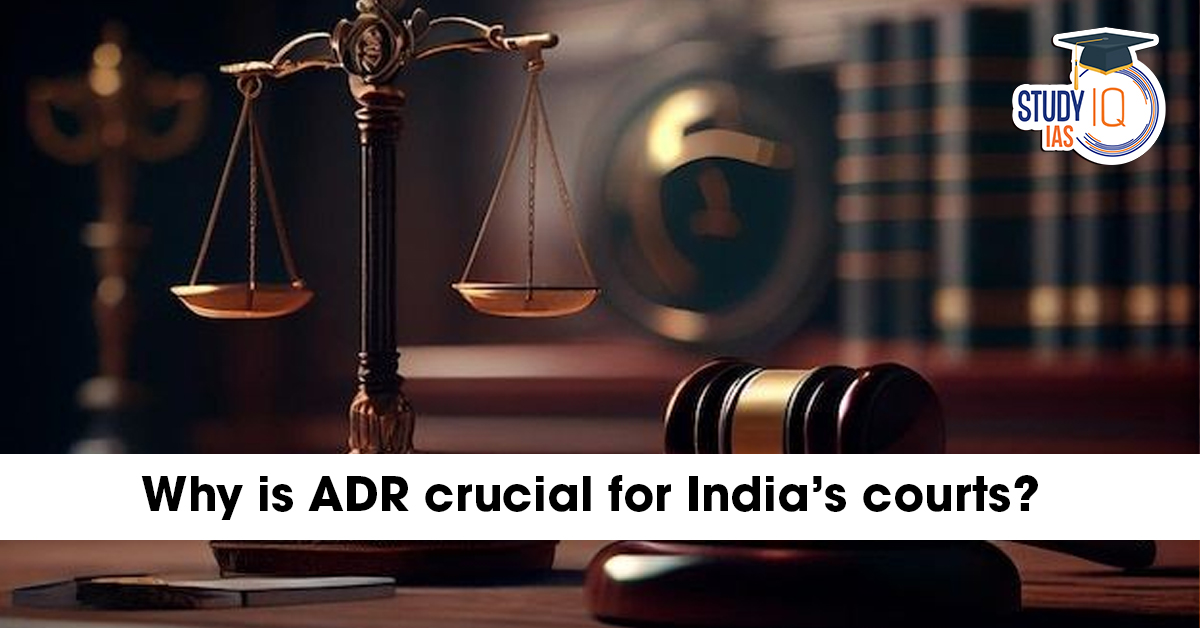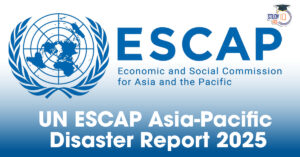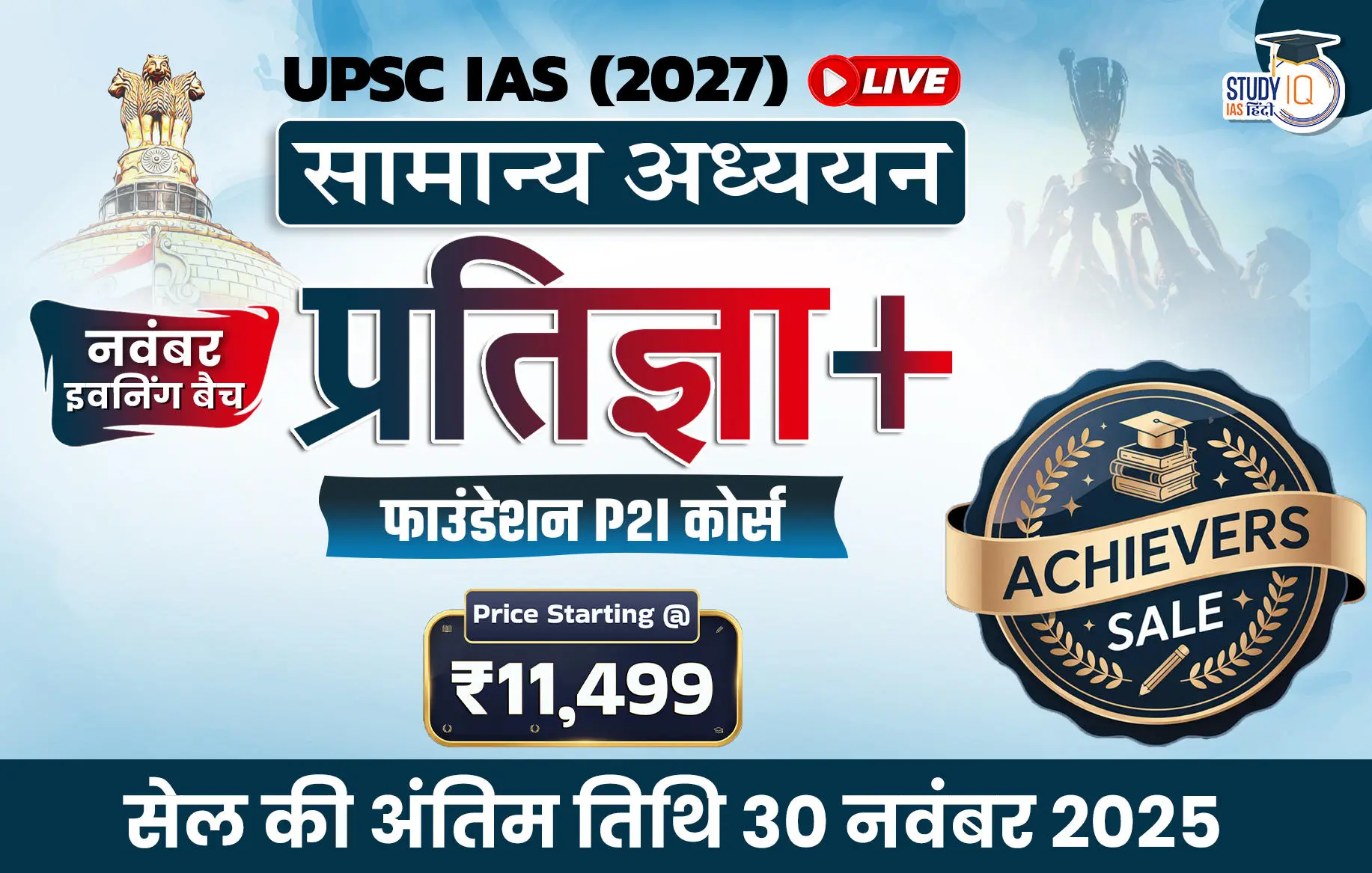Table of Contents
India’s judicial system is struggling under the weight of over 4.57 crore pending cases, according to the National Judicial Data Grid (NJDG).
-
Supreme Court: 81,768 pending cases
-
High Courts: ~6.29 lakh pending cases
-
District and Subordinate Courts: 3.89 crore+ pending cases
The India Justice Report 2025 highlights 33% judicial vacancies in High Courts and 21% in District Courts, with judges in states like Uttar Pradesh, Himachal Pradesh, and Kerala handling 4,000+ cases each.
This unprecedented backlog makes Alternative Dispute Resolution (ADR) indispensable for ensuring timely, accessible, and affordable justice.
What Is Alternative Dispute Resolution (ADR)?
Alternative Dispute Resolution (ADR) refers to mechanisms that allow disputes to be resolved outside the traditional court system.
Major Forms of ADR:
-
Arbitration:
-
A binding process where a neutral arbitrator delivers a final decision.
-
Common in commercial and contractual disputes.
-
-
Conciliation:
-
A non-binding method where a conciliator facilitates mutual settlement.
-
-
Mediation:
-
A voluntary, confidential process guided by a neutral mediator to reach consensus.
-
-
Judicial Settlement / Lok Adalat:
-
Court-referred settlement methods used for public utility and civil disputes.
-
These mechanisms promote speedy resolution, lower costs, and improved access to justice, especially in civil, family, and commercial matters.
Why ADR Is Essential for India
1. Tackling Judicial Backlog
With crores of pending cases, ADR serves as a pressure valve for India’s overburdened judiciary. It allows parties to resolve disputes without lengthy litigation.
2. Time and Cost Efficiency
ADR methods, particularly mediation and arbitration, save time, legal fees, and administrative costs.
They also enhance India’s Ease of Doing Business and contract enforcement index rankings.
3. Promoting Social Inclusion
ADR offers non-adversarial, participatory, and confidential resolution methods that preserve relationships — crucial in family, land, and community disputes.
4. Reducing Adversarial Culture
Unlike traditional litigation, ADR fosters collaboration and compromise, reflecting India’s civilisational ethos of consensus and fairness.
Constitutional and Legal Framework of ADR
Article 39A – Equal Justice and Free Legal Aid
The Indian Constitution mandates the State to ensure equal access to justice and free legal aid, forming the moral foundation of ADR mechanisms.
Section 89, Code of Civil Procedure (CPC), 1908
Recognises ADR processes — arbitration, conciliation, mediation, and judicial settlement — giving them statutory legitimacy.
The Arbitration and Conciliation Act, 1996 (Amended in 2021)
-
Provides the legal architecture for arbitration and conciliation in India.
-
Introduces the Indian Arbitration Council for regulation and oversight.
-
Mandates time-bound resolution (within 180 days).
-
Encourages pre-litigation mediation for civil and commercial matters.
-
Allows exit after two sessions if mediation fails.
Mediation Act 2023: A Game-Changer
The Mediation Act, 2023 institutionalizes mediation as a primary mode of dispute resolution in India.
Key Provisions:
-
Mandates pre-litigation mediation for civil and commercial disputes.
-
Ensures mediation is voluntary, confidential, and time-bound.
-
Introduces the concept of online mediation platforms.
-
Reduces dependency on courts, promoting judicial efficiency.
This Act marks a transformative shift towards citizen-friendly, technology-driven justice delivery.
Lok Adalats: Justice at the Grassroots
Lok Adalats, operating under the Legal Services Authorities Act, 1987, embody Article 39A’s spirit by offering affordable and accessible dispute resolution.
Types of Lok Adalats:
-
Permanent Lok Adalats (Section 22-B) – For public utility services.
-
National Lok Adalats – Conducted periodically across India.
-
e-Lok Adalats – Virtual platforms enabling remote dispute resolution.
Significance:
-
Their decisions are binding and enforceable.
-
No appeal lies against awards, but parties may file a fresh suit if dissatisfied.
-
Promote community-based, people-centric justice.
The first Lok Adalat was held in Gujarat in 1999 — a milestone in India’s grassroots justice movement.
ADR and India’s Global Competitiveness
ADR aligns India’s justice system with international best practices, particularly the UNCITRAL Model Law.
Key Benefits:
-
Enhances foreign investor confidence.
-
Ensures neutrality and efficiency in cross-border disputes.
-
Reduces litigation risk for multinational and domestic corporations.
With India emerging as a global arbitration hub, cities like Mumbai, Delhi, and Hyderabad are developing international arbitration centers to attract global business.
Way Forward: Strengthening ADR in India
To make ADR a core pillar of justice delivery, India must:
-
Enhance Legal Awareness:
Conduct nationwide campaigns on ADR benefits and procedures. -
Build Institutional Capacity:
Strengthen mediation centers, train arbitrators, and digitize dispute resolution platforms. -
Integrate Technology:
Promote e-Mediation and e-Lok Adalats for faster, transparent settlements. -
Ensure Quality Control:
Create accreditation frameworks for mediators and arbitrators to maintain professional standards. -
Promote Community Mediation:
Empower Gram Nyayalayas and Panchayati institutions, reviving traditional consensus-based justice models like Panch Parmeshwar.
Conclusion
Alternative Dispute Resolution (ADR) is not just a legal tool — it is a transformational reform in India’s pursuit of speedy, inclusive, and affordable justice.
By integrating modern laws, traditional values, and global best practices, India can reduce judicial backlog, empower citizens, and restore faith in the justice system.
The renewed focus on mediation, arbitration, and Lok Adalats underlines India’s vision of a 21st-century justice framework — one that is humane, efficient, and truly accessible to all.


 UN ESCAP Asia-Pacific Disaster Report 20...
UN ESCAP Asia-Pacific Disaster Report 20...
 Rare Hawfinch Sighting in Corbett Nation...
Rare Hawfinch Sighting in Corbett Nation...
 Bnei Menashe Community : The Lost Tribe ...
Bnei Menashe Community : The Lost Tribe ...

























